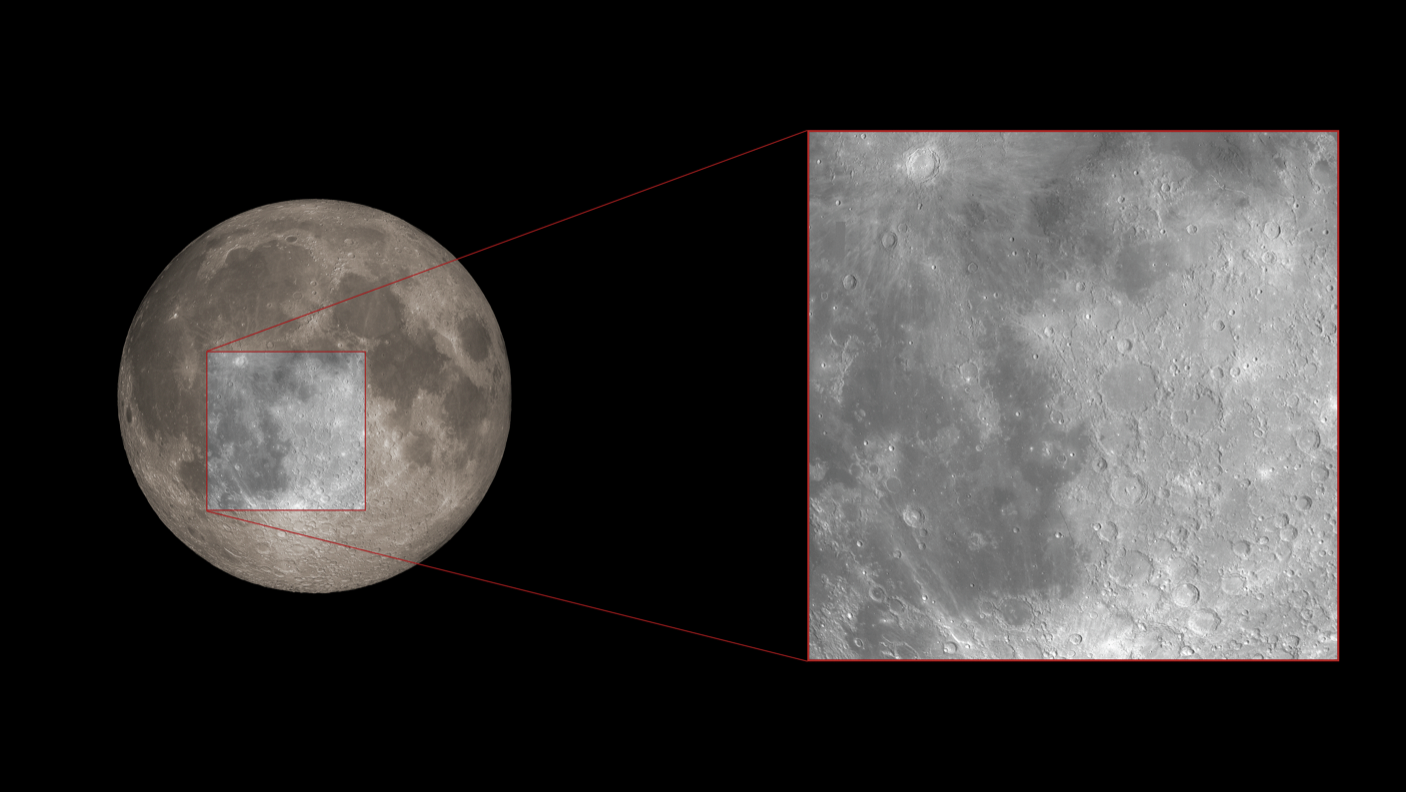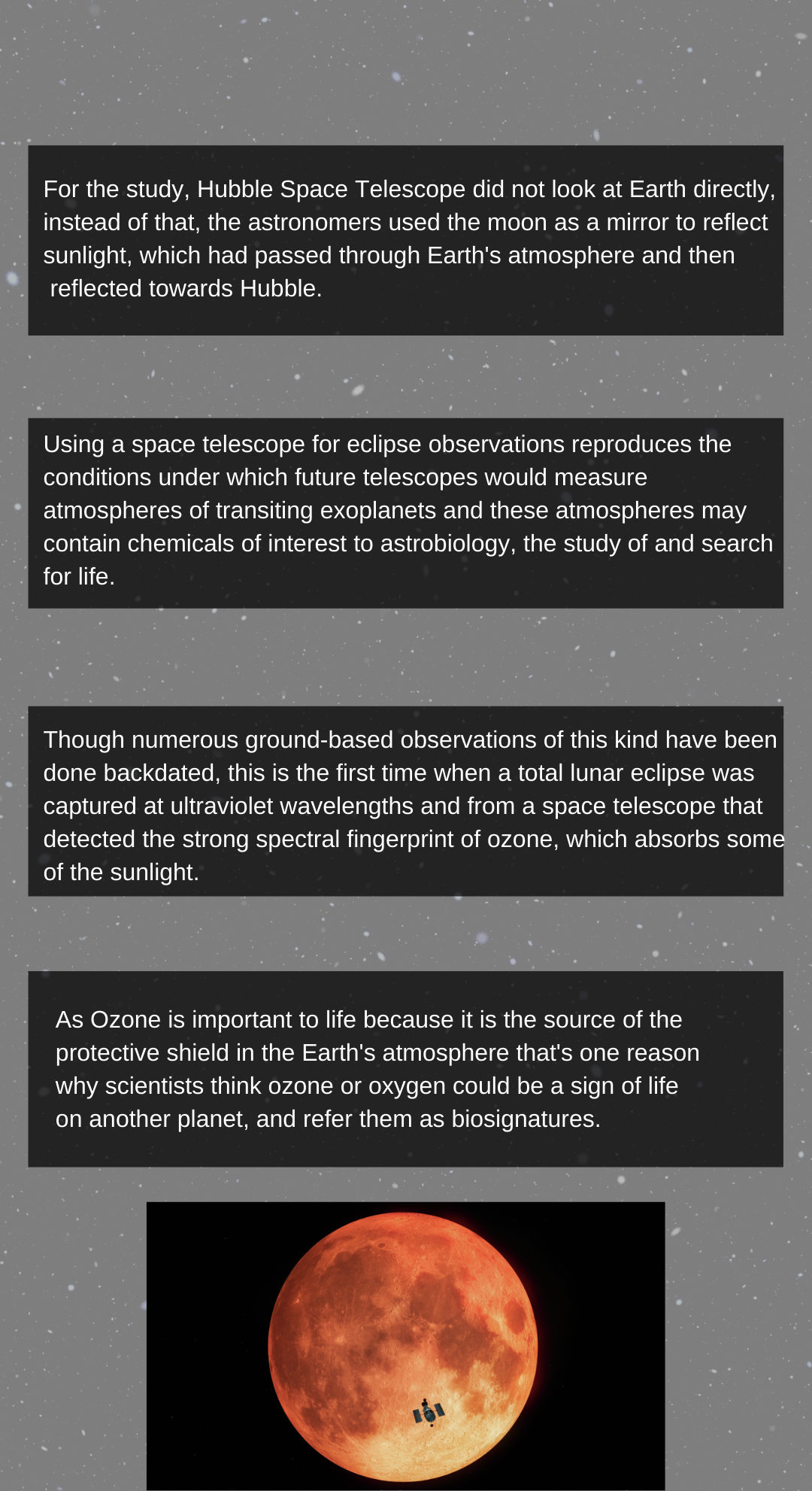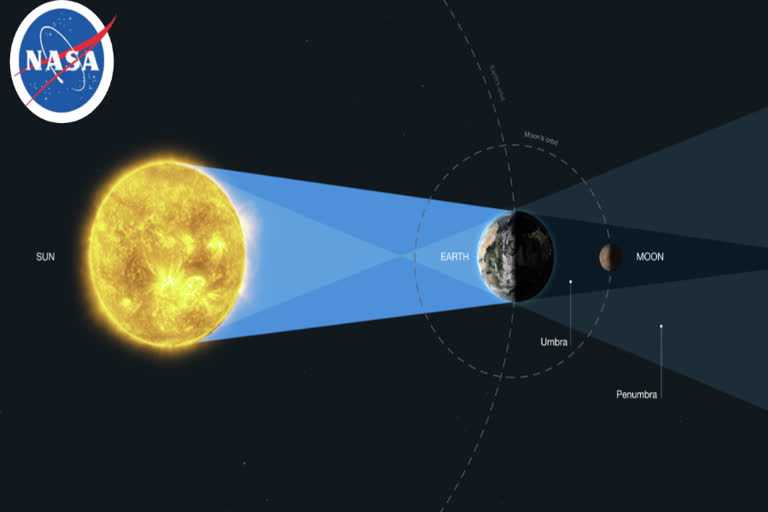Washington: Scientists search for signs of life on planets outside our system but the astronomers using NASA's Hubble Space Telescope have detected Earth's brand of sunscreen, ozone, in our atmosphere by taking advantage of a total lunar eclipse.

This method simulates how astronomers and astrobiology researchers will look for evidence of life beyond Earth by observing potential "biosignatures" on exoplanets.
Allison Youngblood of the Laboratory for Atmospheric and Space Physics at the University of Colorado Boulder says, “One of NASA's major goals is to identify planets that could support life.”
But how would we all know a habitable or an uninhabited planet if we saw one and would they appear like with the techniques that astronomers have at their disposal for characterizing the atmospheres of exoplanets the question arises.
"That's why it's important to develop models of Earth's spectrum as a template for categorizing atmospheres on extrasolar planets," Youngblood explained.

As Ozone is important to life because it is the source of the protective shield in the Earth's atmosphere that's one reason why scientists think ozone or oxygen could be a sign of life on another planet, and refer them as biosignatures.
“Finding ozone is critical because it's a photochemical byproduct of molecular oxygen, which is itself a byproduct of life,” she said.
Also Read: Electric multicooker an easy, efficient way to sanitize N95 respirator masks, study finds
(Inputs from IANS)



